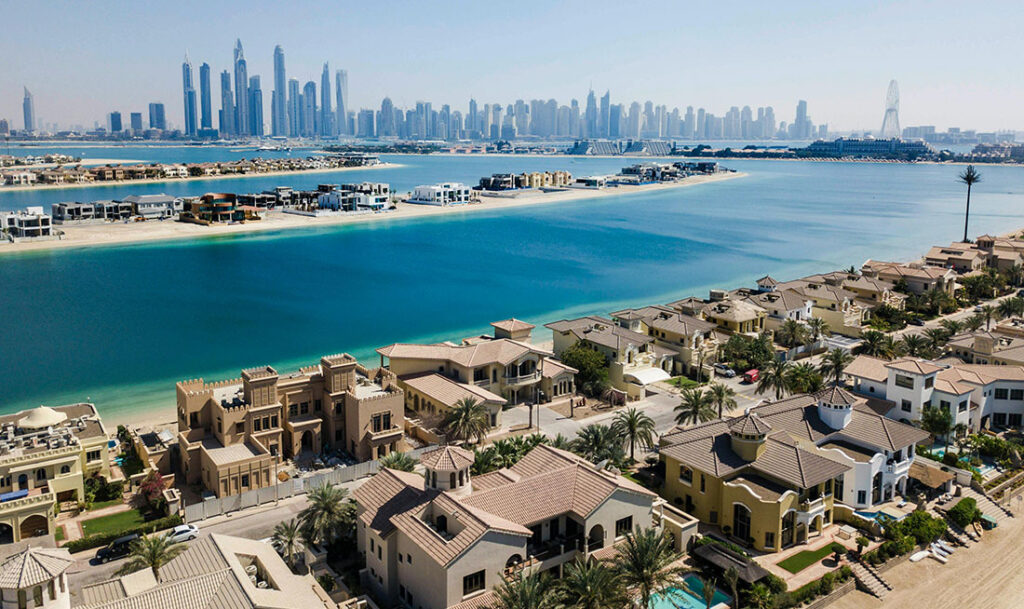

Since 2010, the Global Law Experts annual awards have been celebrating excellence, innovation and performance across the legal communities from around the world.
posted 4 weeks ago
Each time Dubai Real Estate market gathers pace, predictions of a looming correction follow. Commentators warn of overbuilding, speculate on demand softening, or call the cycle unsustainable. Yet the city has repeatedly defied these forecasts. Over the past two decades, values have risen through global downturns, regional shocks, and waves of new supply. The reason is not chance or speculation, but enduring fundamentals that continue to strengthen.
Today, the conditions underpinning demand are stronger than ever. Dubai’s population is projected to grow to nearly six million by 2040, the emirate is recording record inflows of wealthy families, and international investors continue to view the city as one of the safest and most attractive places to live and do business. Taken together, these trends point to a property market with foundations deep enough to support growth for decades to come.
The following is a look at the structural drivers that are likely to sustain Dubai’s real estate market, from population growth and economic expansion to wealth migration, security, and global investor demand.
Population growth and housing demand
Dubai’s planners expect the population to reach five million by the end of this decade and close to six million by 2040. That kind of growth translates into hundreds of thousands of new households, each needing a roof, access to schools, healthcare, and transport. When you break it down, every extra 100,000 residents means in the region of 25,000 new homes. It is a constant pressure on supply that developers can ease but rarely get ahead of.
Anyone watching the market over the past few years will have seen how quickly new projects are taken up. Even when entire neighbourhoods are launched, much of the stock is spoken for well before handover. The city’s ability to absorb fresh housing reflects not only sheer numbers but the fact that new arrivals are often bringing skills, capital, and families. Demand has depth, and that depth is what keeps valuations moving upward over the long run.
Economic base and diversification
Forecasts from the IMF and the UAE Central Bank point to steady economic growth in the years ahead, with Dubai expected to expand by around 3.3 per cent in 2025 and up to 5.4 per cent in 2026. What gives these figures weight is the spread of sectors behind them. Tourism is setting new records, finance continues to deepen through DIFC, and trade and logistics keep drawing investment as global supply routes adapt. Construction remains another anchor, not only in new residential and commercial schemes but in the infrastructure that binds the city together.
For property investors, this broad economic base means that demand for real estate doesn’t rest solely on one driver. Offices fill as companies set up, hotels fill as tourists arrive, and homes fill as new workers and families settle. That steady pull from many directions explains why valuations have held and why they’re likely to keep edging higher over time.
Inflow of wealth
The flow of global wealth into Dubai adds another layer of strength to its property market. Henley’s 2025 report projects a net inflow of 9,800 millionaires this year, bringing an estimated 63 billion dollars in investable assets. Much of that capital finds its way into real estate, with buyers targeting waterfront villas on Palm Jumeirah, apartments in Downtown, and gated communities that combine privacy with space for families. These aren’t speculative purchases but long-term placements of wealth by families who see Dubai as a base.
The effect is felt well beyond the prime districts. When demand at the top end remains intense, developers and investors gain confidence to build and trade across the wider market. Capital from high-net-worth buyers anchors values, sets benchmarks for quality, and sends signals that ripple outward. It’s one of the reasons Dubai’s market holds depth across many price points, not only in the luxury segment.
Security, stability, and lifestyle pull
Safety ranks high among the reasons families choose to put down roots in Dubai. Numbeo’s 2025 index placed the UAE at the top globally, with five of its cities among the ten safest in the world. Dubai itself scored above 83, a level few major urban centres can match. For households weighing a long-term move, those figures carry weight. Parents want to know their children can walk to school, that neighbourhoods are orderly, and that the wider environment feels secure.
This perception of stability feeds directly into property demand. Families making permanent choices about where to live weigh the quality of the home itself alongside the character of the community and the safety of the environment. When that confidence is paired with access to strong schooling and healthcare, it creates powerful incentives for buyers to commit to Dubai as a long-term base.
International buyers and market composition
Indians remain the largest group of buyers, accounting for about a fifth of sales, and their role is shaped by both scale and diversity. Some are building long-term family bases, while others view Dubai as a steady rental market compared with volatility at home. British buyers, at around twelve percent, lean toward prime zones where they can secure lifestyle properties with strong appreciation potential, often linked to schooling or retirement plans. New capital from China and Pakistan has been gathering pace, drawn by visa reforms and the ease of moving funds into real assets. This breadth of demand creates a market that feels less exposed to swings in one country’s fortunes. While the weight of Indian and British interest sets the tone, new capital from China and Pakistan has also been gathering pace, encouraged by visa reforms and the ease of moving funds into real assets. Taken together, these varied buyer profiles spread demand across multiple segments and price brackets, giving the market a depth that’s rare in other cities.
A market built on deep foundations
Long-term planning gives Dubai’s growth a clearer shape. The 2040 Master Plan maps out how the city will expand, while visa reforms and stronger rules on transparency have made it easier for families and investors to commit. These measures sit alongside the demographic and economic momentum already in play. The result is a market that feels less like a cycle and more like a gradual rise set on a long arc. How far that rise extends will depend on execution, but the conditions for growth are now deeply entrenched.
Author


No results available
posted 4 hours ago
posted 2 days ago
posted 3 days ago
posted 3 days ago
posted 4 days ago
No results available
Find the right Legal Expert for your business
Global Law Experts is dedicated to providing exceptional legal services to clients around the world. With a vast network of highly skilled and experienced lawyers, we are committed to delivering innovative and tailored solutions to meet the diverse needs of our clients in various jurisdictions.
Send welcome message